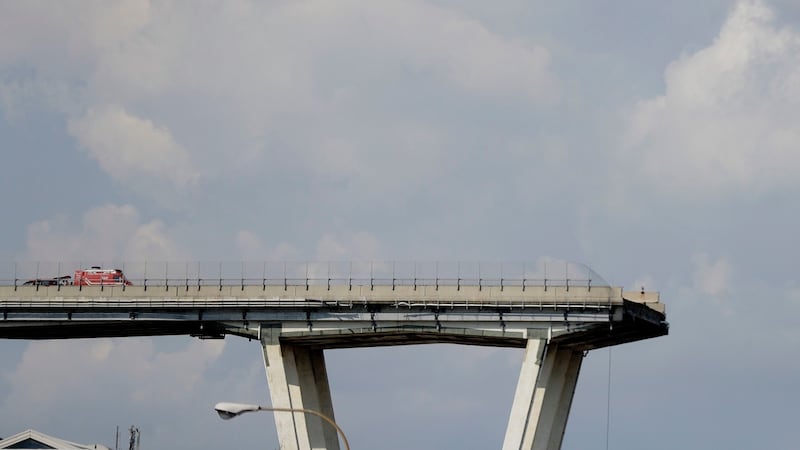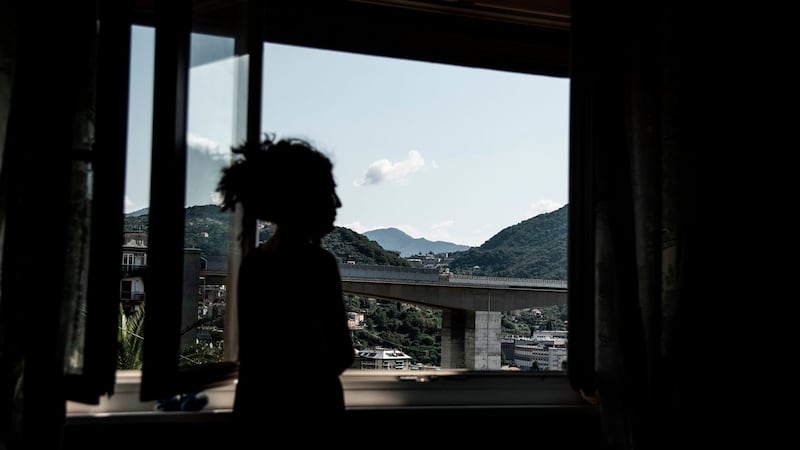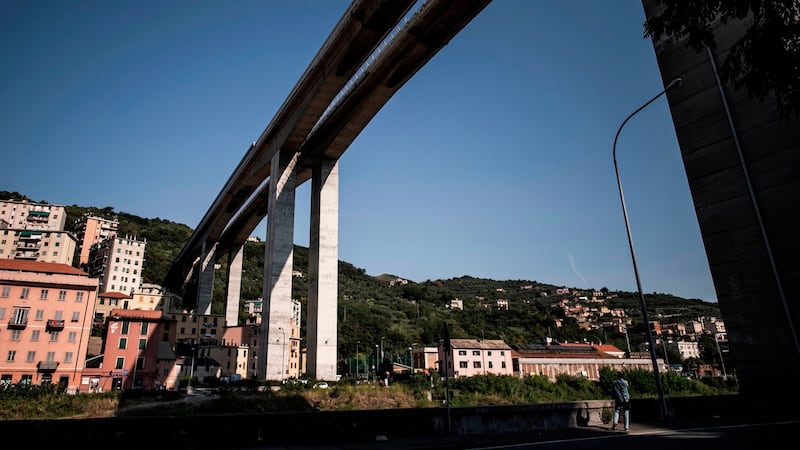When Deborah Ilardi woke up Tuesday, her first thought was about celebrating her 29th birthday. She couldn't have imagined that she'd end the day worrying about where she was going to live. "I still don't know," Ilardi said after the Morandi Bridge in Genoa collapsed next to her building, killing 38 people, and leaving her and hundreds of other nearby residents homeless.
“But what is just as shocking is that we don’t know exactly how we are going to travel from east to west,” she said.
Ilardi, like her city, is in shock. Genoa remains cut into two large sections: the east, with the historic centre where businesses are on their traditional August break and drowsy tourists stroll along narrow medieval streets; and the west, with police officers blocking access to the area around the stricken bridge and residents worrying about the heavy traffic that is expected to hit local roads once the city and its port return to work in the coming weeks.
0 of 3

Experts had warned for years that the bridge, built from 1963 to 1967, was in poor shape and potentially dangerous, and various theories about the collapse have been aired this week. But whether the failure was caused by design flaws, poor maintenance, substandard materials, earth movement or some combination of factors, it could be a long time before investigators provide definitive answers and make it possible to draw lessons from the tragedy.
Paralysed
But it is clear that the debate on how to relieve the bridge of distressingly heavy traffic spanned decades and entangled many city administrations in ideas, projects, problems raising funds and problems finding the political will at all levels of government to carry out a solution.
The result is that Genoa, a fragile piece of urbanity squeezed between the mountains and the sea, is now physically paralysed by its own psychic paralysis when it comes to making major strategic decisions. That wasn’t always the case.
At one time, Genoa and cities all over Italy were doing major construction projects. In the early 1900s, the hill that descended all the way to Genoa’s historic lighthouse was excavated, making room for a coastal railway and further expansion. The first modern piers were built during the fascist years, when a major state-run steel factory was also set up on the city’s western coast. After World War II, the number of piers and the port’s capacity were enlarged to help Italy’s reconstruction efforts.
Construction boom
Since the 1950s, with the postwar economic boom, Italy went through a long phase of large-scale construction, mostly of apartment buildings for the many families who moved to large cities seeking work in factories. Genoa, already a big port city, attracted thousands of new residents in search of homes on its hills.
In the 1960s, the national institute for housing built the Biscione, or big snake, a collection of sinuous three- and six-story compounds that follow the contours of its hillside site. Its thousands of residents have been climbing uphill on the same windy road ever since, enjoying one of Genoa’s most spectacular views.
The Biscione is only one of many apartment complexes that mushroomed untidily in the 1960s and 1970s in Genoa. More and more residents crowded the city’s valleys, defying geography and geology. But roads and other infrastructure to support such development lagged, often seeming like afterthoughts to private construction.
The Morandi Bridge, one of Genoa’s icons for many years, was built so close to private homes that residents couldn’t sleep at night when workers did the maintenance work that was always needed. A few dozens meters separated some windows from the span.
There simply wasn’t enough space. To gain more manoeuvrability and mobility options, Genoa has for years built entire boulevards over creeks and rivers. But what are small, inoffensive streams in summer can grow into powerful water flows with fall and winter precipitation, especially with the increasingly heavy rains of recent years.
Deadly threats
Experts warned on Thursday that other potentially deadly threats lurked in Italy’s aging infrastructure, but so little information is available that no one can reliably estimate the scale of the problem. A jumble of public, private, local, regional and national agencies operate and maintain the country’s highways, bridges, viaducts and tunnels with little oversight, a system so fragmented that it is sometimes unclear who is responsible for a tract of road or a bridge. In the case of a bridge that collapsed in 2016, killing one person, provincial and national authorities continue to blame one another.
“The law says that the owner or concessionaire of the infrastructure must ensure that it is secure for the transit of vehicles,” said Maurizio Crispino, an infrastructure specialist at the Polytechnic University of Milan. But no central authority enforces those requirements, he said, or “controls the upkeep of infrastructure, like there is for airports.”
Italy entrusts its roads to a variety of authorities, from thousands of municipalities to two dozen private companies that manage the nation’s toll highways. A 2001 law called on all road operators to compile a registry of all the infrastructure under their control, but that registry still does not exist, though some progress has been made on it in recent years.
“If you don’t know what you’re responsible for, it’s hard to do proper maintenance,” Crispino said. “It’s a long, complex and challenging process, but it is necessary.” Local and regional officials debated for years before finally agreeing on a plan to expand Genoa’s highway network, which would have relieved pressure on the Morandi Bridge, and possibly make way for its demolition. Construction on that project has not started.
Big infrastructure projects
Big infrastructure projects here often meet fierce opposition from the local population, environmentalists, preservationists and politicians. In the case of Genoa, populists now in the national government had dismissed the highway plan as unnecessary and a formula for corruption.

“This is a general problem in Italy,” said Andrea Del Grosso, a professor emeritus in engineering at the University of Genoa. “It’s always hard to make decisions, so projects drag on for decades, costs inflate, and when they decide to do them, it’s usually too late.”
To transport goods out of Genoa's harbor, the city relies on railways. A new tunnel is under construction to increase connections between the city and northern Italy, and ultimately to Switzerland and France. But the government harshly opposed the plan, fearing that it, like many other large infrastructure projects in Italy, would give rise to a major corruption scandal.
Now that project is going to stall, too. Its first stretch, the railway tracks that routinely move containers from the harbor, are under the tons of concrete blocks from the fallen bridge.

Daniela Cerruti, a doctor with the region’s emergency services, said she could not imagine the scene before her when she responded to an order Tuesday to get to the collapse site. “It was surreal,” said Cerruti, who arrived under the bridge in one of the first ambulances. “What impressed me was the landscape change. You have a bridge and now you have a void, you see the houses and the hills. It’s so shocking.” –New York Times

















